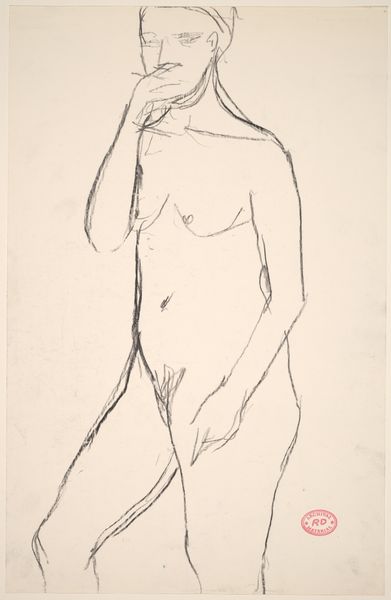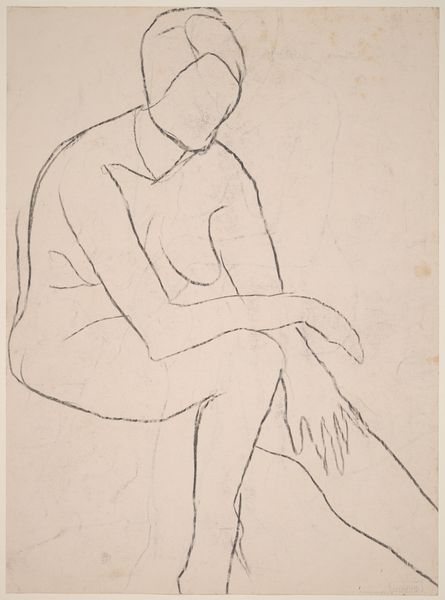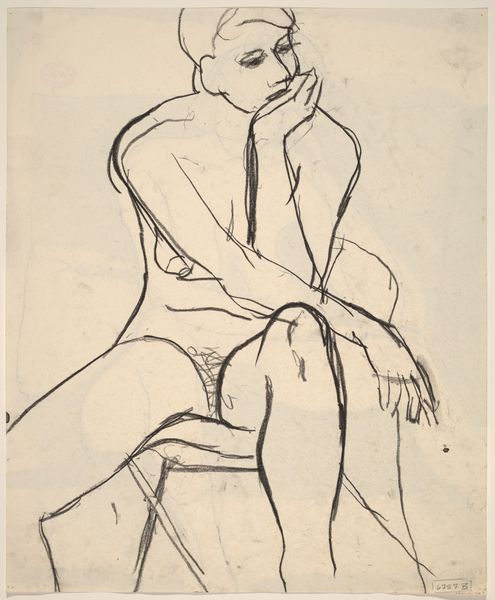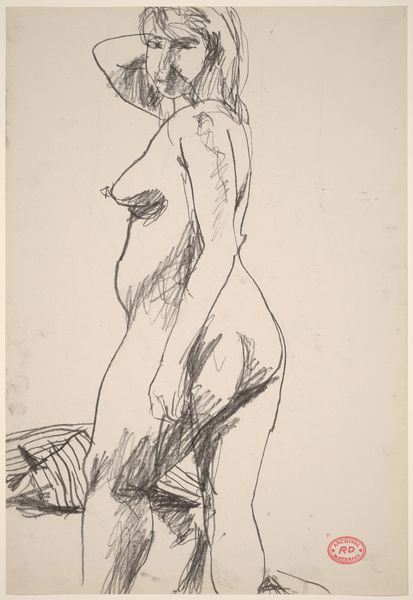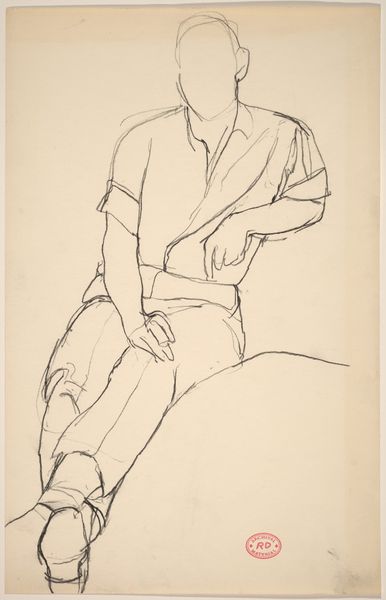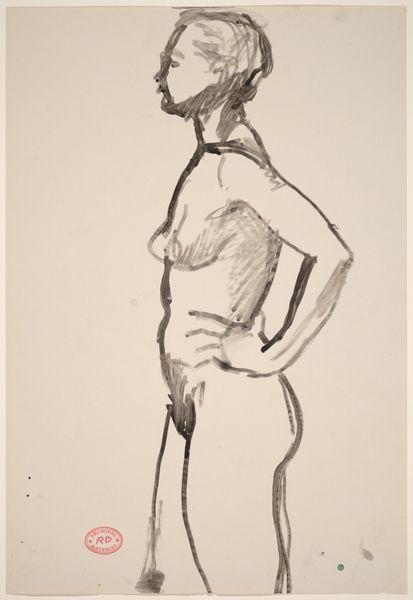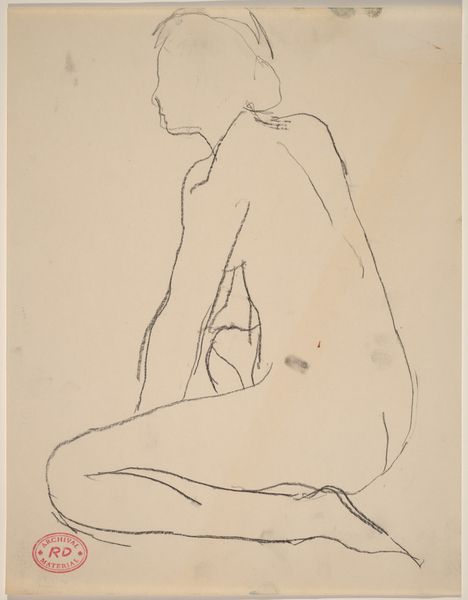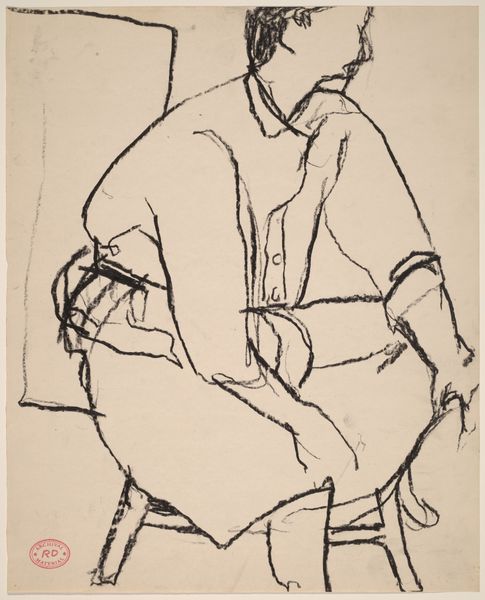![Untitled [side view of a nude with her right arm behind her] by Richard Diebenkorn](/_next/image?url=https%3A%2F%2Fd2w8kbdekdi1gv.cloudfront.net%2FeyJidWNrZXQiOiAiYXJ0ZXJhLWltYWdlcy1idWNrZXQiLCAia2V5IjogImFydHdvcmtzLzZkYmVmODQ4LTFhMzAtNDkxOC05YTMxLTEwYjZlMjg4ZjVhOS82ZGJlZjg0OC0xYTMwLTQ5MTgtOWEzMS0xMGI2ZTI4OGY1YTlfZnVsbC5qcGciLCAiZWRpdHMiOiB7InJlc2l6ZSI6IHsid2lkdGgiOiAxOTIwLCAiaGVpZ2h0IjogMTkyMCwgImZpdCI6ICJpbnNpZGUifX19&w=3840&q=75)
Untitled [side view of a nude with her right arm behind her] 1955 - 1967
0:00
0:00
drawing, pencil
#
abstract-expressionism
#
drawing
#
figuration
#
bay-area-figurative-movement
#
pencil
#
nude
#
modernism
Dimensions: overall: 40.6 x 27.9 cm (16 x 11 in.)
Copyright: National Gallery of Art: CC0 1.0
Curator: This is an untitled drawing by Richard Diebenkorn, likely created sometime between 1955 and 1967. Editor: My immediate impression is of the simplicity. It's sparse, almost vulnerable, just a few pencil strokes capturing the essence of the human form. Curator: Diebenkorn was known for his abstract expressionist paintings, but his drawings, like this one done in pencil, show his foundational understanding of form. I feel the vulnerability you’ve observed. It's raw, immediate – a fleeting moment captured on paper. Editor: Exactly. I'm also interested in the paper itself. What type was it, what were the conditions in which the artist worked? The roughness of the grain visible through the graphite suggests it was probably a readily available material, meant to be worked and reworked in the studio. Nothing precious about the underpinnings here, everything put toward rendering this intimate form. Curator: The lines are so economical, aren't they? Each one feels considered, even hesitant, exploring the planes and contours of the body. It really exemplifies that modernist pursuit of paring down to the essential. Editor: Absolutely. And yet, it also hints at the labor involved. A sustained practice, a dedication to observing the model and translating that into marks. You can sense the artist's hand moving across the page, wrestling with representation, searching for form not just imitating it. Think too about the consumption of paper, pencils – humble, quotidian items brought to the service of representing beauty. Curator: I like how it doesn’t seem to strive for photographic realism, it seeks a deeper, almost emotional realism instead. The positioning of her hand behind her seems thoughtful. Almost coy. Editor: It's true. But the sketch aesthetic also allows us to focus on the elements, that is the material truth of the artistic process itself. And also about gender too... I wonder, in terms of labor, what the sitter was paid, and the relationship dynamics there during those mid-century art sittings? Curator: It’s beautiful to consider the interplay of the objective materials, the lived experiences, and this rather stunning drawing. So much simplicity, hiding a potent artistic interaction. Editor: Precisely. A confluence of hands – those that mine the graphite, press it, and hold poses for art's sake—manifest in deceptively modest, but in fact highly charged art work.
Comments
No comments
Be the first to comment and join the conversation on the ultimate creative platform.
